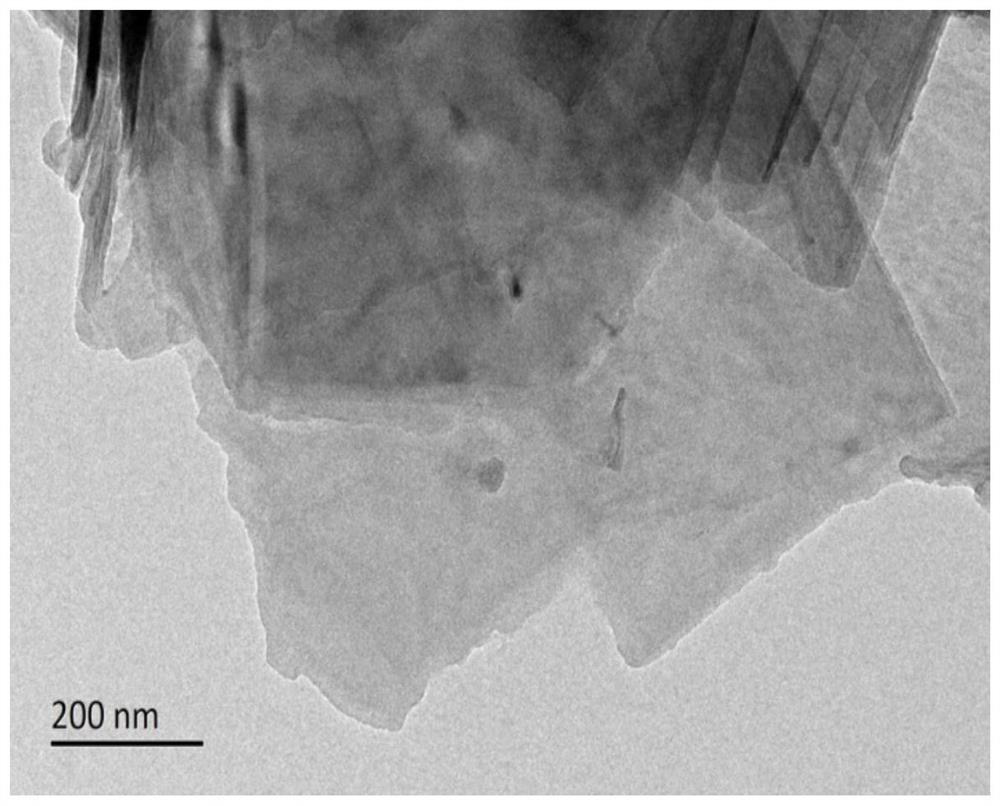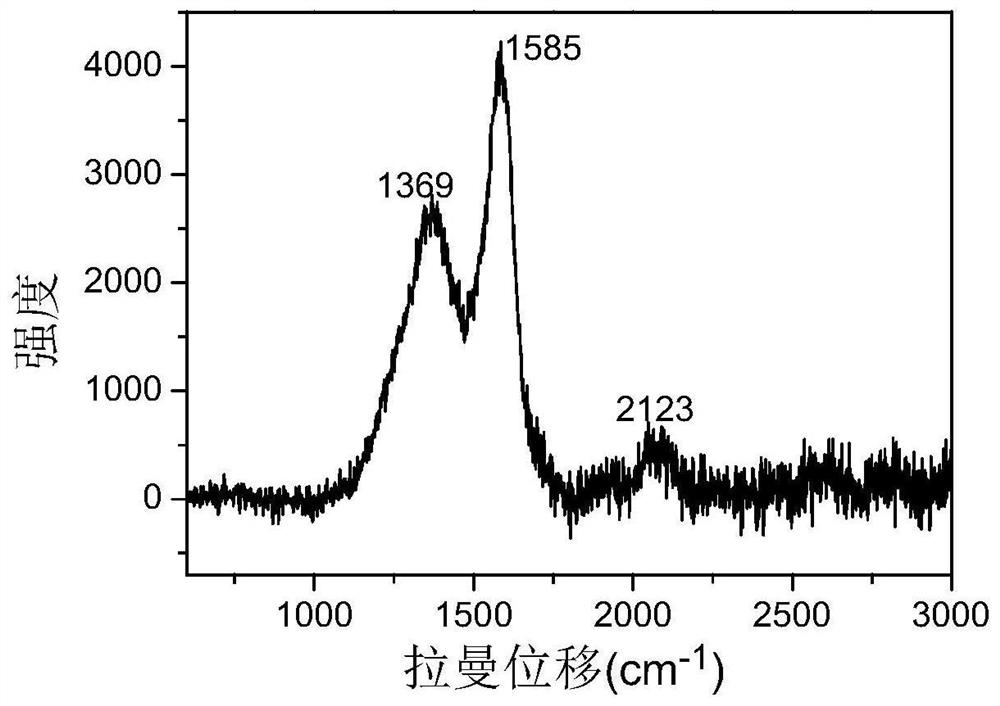A biosensor based on two-dimensional all-carbon nanomaterial graphyne and its application
A biosensor, graphdiyne technology, applied in the field of biosensors to achieve the effects of good biocompatibility, good film-forming ability, and ultra-high sensitivity
- Summary
- Abstract
- Description
- Claims
- Application Information
AI Technical Summary
Problems solved by technology
Method used
Image
Examples
preparation example Construction
[0040] The specific steps of the preparation of the tyrosinase electrochemical biosensor and the detection process of the sample are as follows:
[0041] (a) After graphdiyne is mixed with water, the dispersion system 1 is obtained through ultrasonic pretreatment;
[0042] (b) chitosan is dissolved in 1% acetic acid solution to obtain chitosan solution;
[0043] (c) mixing the graphdiyne dispersion with tyrosinase buffered saline solution, shaking at room temperature for 0.5 hours;
[0044] (d) Add the chitosan solution to the composite material solution formed by graphyne and enzyme molecules and mix evenly, take 5uL of the composite solution containing graphyne-tyrosinase-chitosan (GDY-Tyr-Chi) as drops Add it to the surface of the glassy carbon electrode that has been polished, and let it dry at room temperature to obtain the electrochemical biosensor.
[0045] The graphyne of the present invention is preferably synthesized by chemical in-situ reaction on the surface of t...
Embodiment 1
[0053] Characterization of two-dimensional all-carbon nanomaterial graphyne
[0054] The morphology and structure of graphyne were characterized by TEM, XRD and Raman. figure 1 , figure 2 with image 3 TEM, XRD and Raman spectra of graphyne are given. from figure 1 It can be seen from the TEM image that graphdiyne has a continuous and uniform microstructure of laminated layers. from figure 2 It can be observed from the XRD pattern in the figure that the graphyne sample only has an obvious diffraction peak at 22.4 °, indicating that the graphyne is amorphous. image 3 There are three groups of characteristic peaks in the Raman spectrum in , which are located at 1585 cm -1 The G peak (sp on the benzene ring 2 First-order Raman scattering of hybridized carbon atoms), 1369cm -1 D peak (defect in carbon material), 2123cm -1 peaks (sp hybridized carbon atoms on the alkyne group vibrate), indicating that the carbon in graphyne is only sp and sp 2 Two states of hybridizati...
Embodiment 2
[0056] Preparation of tyrosinase electrochemical biosensor
[0057] Glassy carbon electrode assembly steps:
[0058] (a) Polish the surface of the glassy carbon electrode with aluminum oxide powders with particle sizes of 1 μm, 0.3 μm, and 0.05 μm in sequence, then repeatedly ultrasonically clean it in absolute ethanol and deionized water, and then clean the surface of the electrode with high-purity nitrogen gas. Blow dry and set aside. Put it into 1 mmol / L potassium ferricyanide / potassium ferrocyanide solution (molar ratio 1:1), and scan the cyclic voltammetry curve between -0.1 and +0.6 V. The redox peak potential difference of the curve is less than 70mV, indicating that the redox reaction on the surface of the glassy carbon electrode is a completely reversible reaction, and the electrode polishing is in good condition, and the next experiment can be carried out.
[0059] (b) Construction of graphyne-tyrosinase composites. After the graphyne was mixed with water, the gra...
PUM
| Property | Measurement | Unit |
|---|---|---|
| concentration | aaaaa | aaaaa |
Abstract
Description
Claims
Application Information
 Login to View More
Login to View More - R&D
- Intellectual Property
- Life Sciences
- Materials
- Tech Scout
- Unparalleled Data Quality
- Higher Quality Content
- 60% Fewer Hallucinations
Browse by: Latest US Patents, China's latest patents, Technical Efficacy Thesaurus, Application Domain, Technology Topic, Popular Technical Reports.
© 2025 PatSnap. All rights reserved.Legal|Privacy policy|Modern Slavery Act Transparency Statement|Sitemap|About US| Contact US: help@patsnap.com



